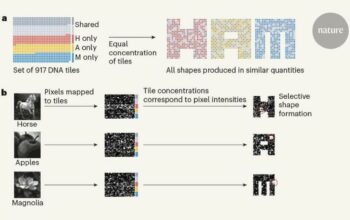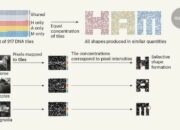In the rapidly evolving domain of life’s intricacies, the branches of structural biology and molecular biology emerge as significant pathways for scientific inquiry and career development. As two distinct yet intertwined disciplines, they offer unique vistas into the fundamental workings of life. Herein lies an engaging proposition: which career path—structural biology or molecular biology—presents the more promising opportunity? This question begs exploration within the context of viability, practicality, and personal proclivities in advancing knowledge and technology in biological sciences.
To initiate this discourse, it is essential to delineate the domains of structural biology and molecular biology. Structural biology focuses on the three-dimensional architecture of biological macromolecules, comprising proteins and nucleic acids. The discipline hinges upon a plethora of sophisticated techniques such as X-ray crystallography, nuclear magnetic resonance (NMR) spectroscopy, and cryo-electron microscopy. Each of these methodologies unveils not merely the static structures but also the dynamic behaviors of biomolecules—insights pivotal for drug design and therapeutic interventions.
In contrast, molecular biology delves predominantly into the molecular underpinnings of biological processes. It examines the interactions between various cellular entities, including proteins, DNA, and RNA, elucidating the mechanisms of genetic expression and regulation. This field captures the quintessence of the genetic code and its expression, providing profound insights essential for innovations in biotechnology, genetic engineering, and disease treatment.
As we pivot toward career trajectories, the question crystallizes further: what constitutes a “better” career bet? To discern which path may be more advantageous, we must consider several cardinal factors: job prospects, potential for advancement, interdisciplinary opportunities, and personal fulfillment within the scientific milieu.
Job prospects provide the first pivotal metric. Both structural and molecular biology have burgeoned in the contemporary job market, yet their specific opportunities may diverge significantly. Structural biologists are often sought after in pharmaceutical companies, academic research institutions, and that sacred nexus where universities meet industry. Here, they contribute to understanding drug-target interactions and protein design. Conversely, molecular biologists frequently find their niches in research labs dedicated to genetic research, biotechnology firms, or healthcare industries focusing on genetic diagnostics. Due to the generalizable nature of molecular biology, its practitioners may often traverse into other life science sectors, such as personalized medicine or public health genomics.
Next, considering potential advancement, one must evaluate the trajectory inherent to the specialization. Structural biology may yield a direct pathway toward senior roles in research, particularly as protein engineering and structure-based drug design continue to gain prominence. Nevertheless, these roles demand a robust grounding in interdisciplinary collaboration, often necessitating the integration of computational biology and bioinformatics. Concurrently, molecular biologists, with their adaptability to a myriad of contexts, may find themselves at the forefront of innovative technologies that challenge existing paradigms. The proliferation of CRISPR technology exemplifies this dynamic, where molecular biologists are pivotal in ushering in a new era of genetic intervention.
Interdisciplinary opportunities present a third prism through which to view these fields. Structural biology often necessitates partnerships with chemists, physicists, and computational scientists; hence, the professional landscape for those who select this path may be intensely multidisciplinary. The convergence of structural insights with computational algorithms enables a rich arena for innovative research endeavors. Molecular biology, while similar in its interconnectivity, branches further into sociology, ethics, and bioinformatics, enriching the dialogue surrounding genetic manipulation and its implications in society.
However, despite these prospects, one must not overlook the potential challenges intrinsic to both careers. In structural biology, the complexities of experimental verification can lead to prolonged periods of uncertainty and frustration. One may pose a challenging question: How does one navigate the daunting intricacies of protein crystallization only to find that the target molecule fails to yield clear results? This challenge necessitates resilience and creativity in problem-solving, traits that will significantly shape the career. Alternatively, molecular biology’s rapid advancements and ethical dilemmas demand practitioners to remain perpetually updated on best practices while grappling with societal ramifications. The question lingers: Is one’s expertise in molecular manipulation equipped to address the societal implications it engenders?
Finally, an often understated factor in the career choice is personal fulfillment. One must consider the attractions of scientific curiosity and intellectual engagement that differ vastly between the two paths. Aspiring scientists attracted to the problem-solving aspects of structural biology may revel in the challenge of elucidating the fine details of macromolecular formations. Conversely, those drawn to molecular biology may thrive in environments that embrace rapid change and innovation, delighting in the potential to affect lives through genetic advancements.
In conclusion, the choice between a career in structural biology and one in molecular biology encompasses a tapestry woven from threads of opportunity, challenge, and personal aspirations. Each discipline possesses unique merits and hurdles that merit consideration. Ultimately, the better career bet hinges upon individual propensities and professional objectives. As the scientific community propels forward into uncharted territories, those who navigate these paths with both foresight and passion shall undoubtedly champion the frontiers of biological research and its applications in our world.












